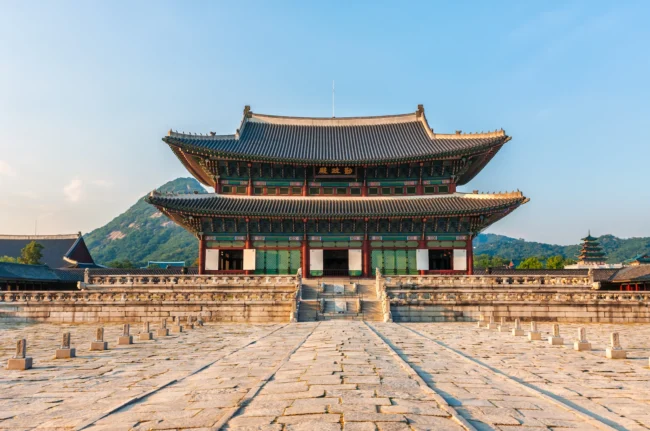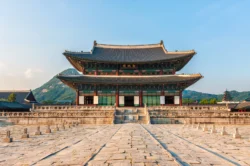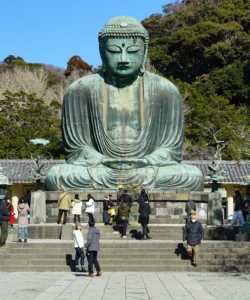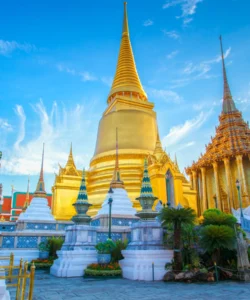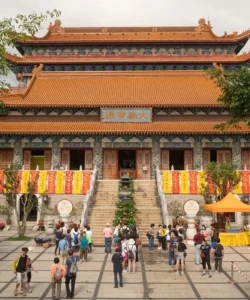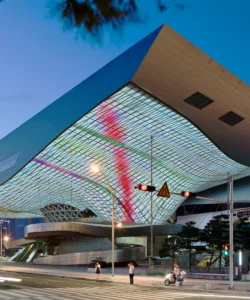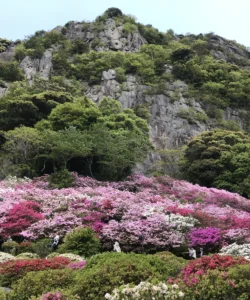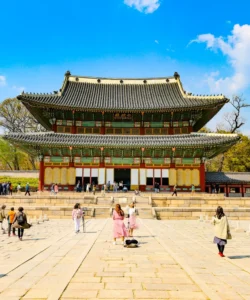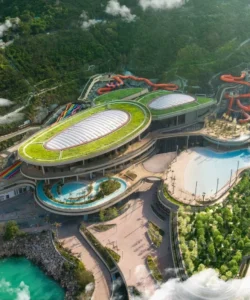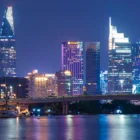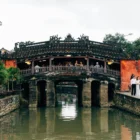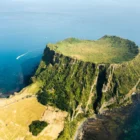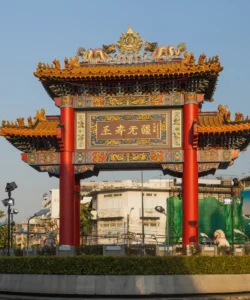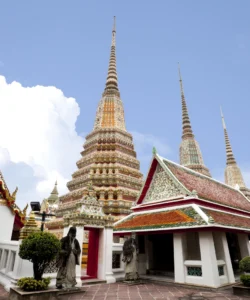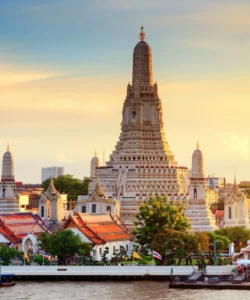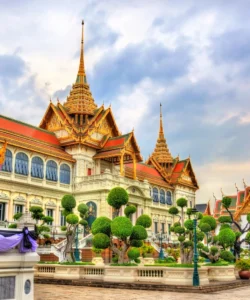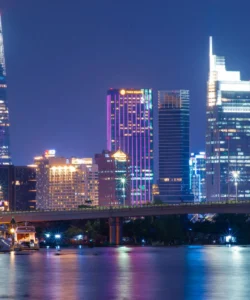Gyeongbokgung Palace, meaning “Palace Greatly Blessed by Heaven,” is the largest and arguably the most beautiful of the Five Grand Palaces built during the Joseon Dynasty. Located in northern Seoul, South Korea, it served as the main royal palace for centuries, embodying the heart of the kingdom and its government. Despite a tumultuous history of destruction and reconstruction, Gyeongbokgung stands today as a magnificent testament to Korea’s rich imperial past and a pivotal cultural landmark.
Name: Gyeongbokgung Palace (경복궁; 景福宮)
Address: 161 Sajik-ro, Jongno-gu, Seoul, South Korea.
How to get there:
Gyeongbokgung Palace is conveniently located in central Seoul and easily accessible by public transport:
- By Subway: The most popular method. Take Seoul Subway Line 3 to Gyeongbokgung Station (Exit 5), which leads directly to the palace’s main entrance, Gwanghwamun Gate. Alternatively, take Seoul Subway Line 5 to Gwanghwamun Station (Exit 2), which is also a short walk from Gwanghwamun Gate.
- By Bus: Numerous bus routes pass near Gyeongbokgung Palace and Gwanghwamun Plaza.
- By Taxi/Ride-Sharing Services: Taxis are readily available throughout Seoul and offer a direct and comfortable way to reach the palace.
- Walking: The palace is within walking distance of other major attractions like Bukchon Hanok Village and Insadong, making it easy to combine visits.
Landscape and Architecture:
Gyeongbokgung Palace is a sprawling complex that perfectly blends traditional Korean architecture with meticulous landscape design, adhering to Confucian ideals and feng shui principles:
- Grand Scale and Layout: The palace spans over 40 hectares and is laid out formally with a “court in front, residence in back” design. Government offices are situated in the front, while the private royal quarters are located in the rear.
- Gwanghwamun Gate: The impressive main entrance to the palace, with its imposing stone structure and double-layered wooden roof, sets a majestic tone for visitors. It often hosts the daily Changing of the Royal Guard ceremony.
- Geunjeongjeon Hall: The principal throne hall and the most important building in the palace, where the king conducted official state affairs, including coronations and receiving foreign envoys. It features a grand two-story structure on a raised stone platform, an open interior, and intricate sculptures of zodiac signs and mythical creatures. The rough granite courtyard prevented glare for officials.
- Gyeonghoeru Pavilion: A stunning two-story pavilion that stands on 48 stone pillars in the middle of a serene rectangular pond. Historically used for royal banquets and important state ceremonies, its picturesque reflection makes it one of the most iconic and beautiful spots in the palace.
- Hyangwonjeong Pavilion: A charming hexagonal pavilion located in a tranquil, landscaped garden, set on a small island in a lotus pond, accessible by a graceful wooden bridge. It embodies the essence of traditional ink paintings.
- Gangnyeongjeon Hall and Gyotaejeon Hall: The king’s and queen’s living quarters, respectively, demonstrating the elegant simplicity of royal residential architecture.
- Dancheong Colors: The buildings are adorned with Dancheong, a traditional Korean decorative coloring technique using a vibrant palette of red, blue, yellow, white, and black, applied to wooden buildings to protect them and symbolize various cosmic elements.
- Hanok Houses: Within the palace grounds, visitors can also see examples of traditional Korean houses (hanok), characterized by wooden frames, thick earthen walls, and curved tiled roofs, designed for insulation against varied climates.
- Integrated with Nature: The palace’s design harmonizes with its natural surroundings, with Bugaksan Mountain serving as a majestic backdrop to the north, adhering to auspicious feng shui principles.
What makes it famous:
Gyeongbokgung Palace is famous for:
- Largest and Main Royal Palace: It was the primary and largest palace of the Joseon Dynasty (1392-1897), the longest-ruling dynasty in Korean history, and the seat of its government.
- Symbol of Joseon Dynasty: The palace embodies the architectural and philosophical ideals of the Joseon Dynasty, particularly its Confucian principles of simplicity and harmony with nature.
- Site of Historical Events: It was the birthplace of Hangul, the Korean alphabet, invented by King Sejong the Great within its walls. It also witnessed numerous significant historical events, including the tragic assassination of Empress Myeongseong in 1895 at Okhoru Pavilion.
- Daily Changing of the Royal Guard Ceremony: A popular tourist attraction that reenacts the ancient guard-changing ritual at Gwanghwamun Gate, complete with traditional costumes and music.
- Extensive Restoration Project: After being repeatedly destroyed (notably during the Japanese invasions of 1592-1598 and again during the Japanese occupation in the early 20th century) and left in ruins for centuries, the palace has undergone extensive and meticulous restoration since the 1990s, aiming to bring it back to its original grandeur. This ongoing project highlights Korea’s commitment to preserving its heritage.
- Hanbok Experience: Visitors wearing traditional Korean clothing (hanbok) are granted free admission, making it a popular activity to immerse oneself in the historical setting and take photos.
- Home to Museums: The palace grounds house the National Palace Museum of Korea and the National Folk Museum of Korea, offering further insights into Korean royal history and everyday life.
Differences from some other wonders:
Gyeongbokgung Palace stands out from other royal palaces and historical sites in several distinctive ways:
- Cycles of Destruction and Restoration: While many historical palaces have faced damage, Gyeongbokgung’s history of near-total destruction (twice) followed by extensive, meticulous restoration efforts spanning decades is particularly significant. This ongoing commitment to rebuilding its past from near oblivion makes its current grandeur a testament to national resilience, unlike palaces with more continuous existence (e.g., Forbidden City) or a single period of ruin.
- Joseon Dynasty’s “First” Palace: As the first and primary palace of the Joseon Dynasty, it represents the foundational principles and earliest grand architectural expressions of this long and influential Korean kingdom, setting it apart from later palaces within the same dynasty (like Changdeokgung, which is famed for its more organic layout).
- Emphasis on Simplicity and Harmony: Compared to the overwhelming grandeur and ostentatiousness often seen in Chinese imperial palaces (like the Forbidden City), Gyeongbokgung, while grand, reflects the Joseon Dynasty’s Confucian preference for simplicity, elegance, and harmony with the natural landscape. The use of less vibrant roof tiles (grey instead of bright yellow) and fewer mythical figures on eaves, for instance, are subtle but distinct differences.
- Birthplace of Hangul: Its specific role as the place where Hangul, the unique Korean alphabet, was created, imbues it with a profound linguistic and cultural significance that few other palaces can claim.
- Hanbok Cultural Integration: The active encouragement and free admission for visitors wearing hanbok create a unique cultural immersion experience where visitors become part of the historical ambiance, a practice that is very specific to Korean palaces.
In essence, Gyeongbokgung Palace is more than just a magnificent collection of buildings; it is a profound symbol of Korean identity, resilience, and a living museum that powerfully narrates the story of a great dynasty and its enduring cultural legacy.
